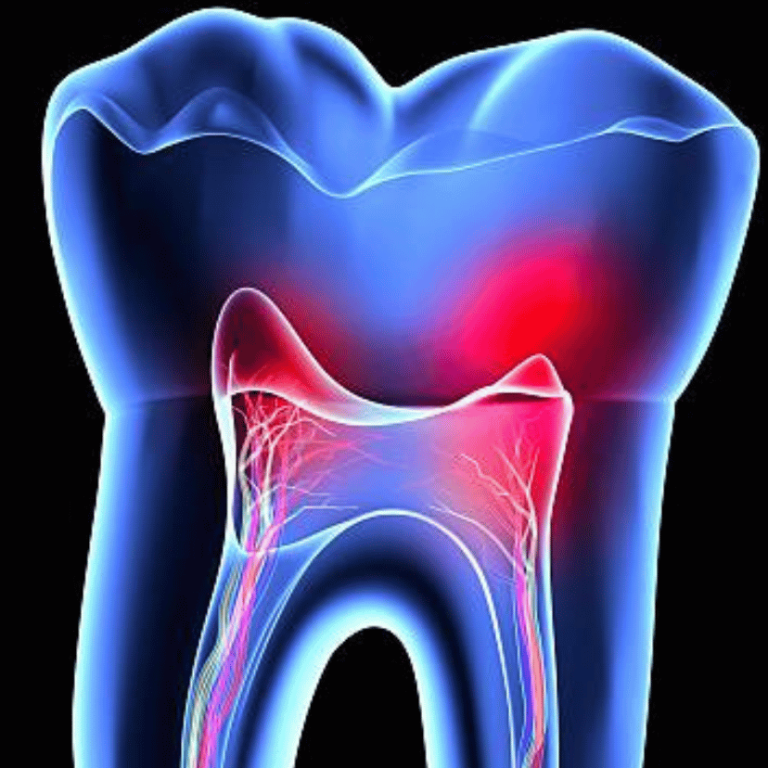
Silver Diamine Fluoride
(SDF) in Dentistry
What is SDF?
SDF stands for Silver Diamine Fluoride, which is a topical liquid medication used for the treatment of dental cavities. SDF is applied directly to the affected tooth using a small brush or dropper, and it works by stopping the progression of tooth decay and reducing the risk of further damage.
SDF contains silver, which has antibacterial properties and helps to kill the bacteria that cause cavities, and fluoride, which helps to strengthen the enamel on the teeth and prevent further decay. The combination of silver and fluoride makes SDF a highly effective treatment for cavities, especially in cases where traditional fillings may not be feasible or desirable.
SDF is most commonly used for the treatment of cavities in children, elderly patients, and people with special needs, as it is a quick, painless, and non-invasive treatment option. However, it should be noted that SDF is not intended to replace traditional fillings and may not be suitable for all patients or all types of cavities. Dr Estafan will be able to recommend the best treatment options for you based on the severity of your cavities and your individual needs.

Are there any negative effects of SDF?
SDF is generally considered to be a safe and effective treatment for cavities, but like any medical treatment, there can be potential negative effects. Some of the most common side effects of SDF include:
Discoloration: One of the most well-known side effects of SDF is that it can cause discoloration of the treated tooth. This discoloration is due to the silver component of SDF and can range from a light gray to a dark black color. This is a major side effect and cannot be overstated. Use of SDF must always be preceded with a discussion of risks and benefits.
Sensitivity: Some patients may experience temporary sensitivity or discomfort in the treated tooth, especially if the cavity is close to the nerve.
Staining of adjacent surfaces: SDF can also stain adjacent surfaces, such as the gums, tongue, or other teeth, if it comes into contact with them.
Allergic reactions: In rare cases, patients may experience an allergic reaction to the silver or fluoride in SDF.
It is important to note that these side effects might not necessarily be temporary. Additionally, the benefits of using SDF, such as preventing the progression of tooth decay and reducing the need for more invasive treatment options, often outweigh the potential negative effects. If you are considering SDF for the treatment of your cavities, it is important to discuss the potential side effects and benefits with Dr Estafan to determine if it is the right treatment option for you.
Can SDF be used before composite bonding?
Yes, SDF can be used before composite bonding. In fact, using SDF before composite bonding may actually be beneficial in some cases.
SDF can help to halt the progression of cavities and prevent further decay, which can make the bonding process easier and more successful. If the cavity is allowed to progress, it can lead to a more extensive and complicated repair process, making it more difficult to achieve a good bond with the composite material.
Additionally, by treating the cavity with SDF before composite bonding, Dr Estafan can ensure that the bonding material is being applied to a stable and healthy tooth surface, which can help to ensure the longevity and success of the bonding procedure.
However, it is important to note that SDF should not be used on teeth that have already been bonded with composite material, as it can cause discoloration and other negative effects on the bonding. If you are considering composite bonding and have cavities, it is important to discuss the best treatment options with Dr Estafan, who can help to determine the most appropriate approach based on your individual needs and situation.


Can SDF irritate the dental nerve?
SDF can potentially irritate the dental nerve, causing temporary sensitivity or discomfort in the treated tooth. This is most likely to occur if the cavity being treated is close to the nerve or if the tooth has already been damaged, as these conditions can increase the likelihood of nerve irritation.
However, it is important to note that nerve irritation is generally a temporary and mild side effect of SDF treatment, and it typically resolves on its own within a few days. Additionally, the benefits of using SDF, such as stopping the progression of tooth decay and reducing the risk of further damage, often outweigh the potential for temporary nerve irritation.
If you experience sensitivity or discomfort after SDF treatment, it is important to contact Dr Estafan, who can recommend steps to manage the symptoms and ensure that the treatment is still effective. In some cases, Dr Estafan may recommend additional treatments, such as a desensitizing agent or a fluoride varnish, to help alleviate the sensitivity.

©Copyright. All rights reserved.
We need your consent to load the translations
We use a third-party service to translate the website content that may collect data about your activity. Please review the details in the privacy policy and accept the service to view the translations.